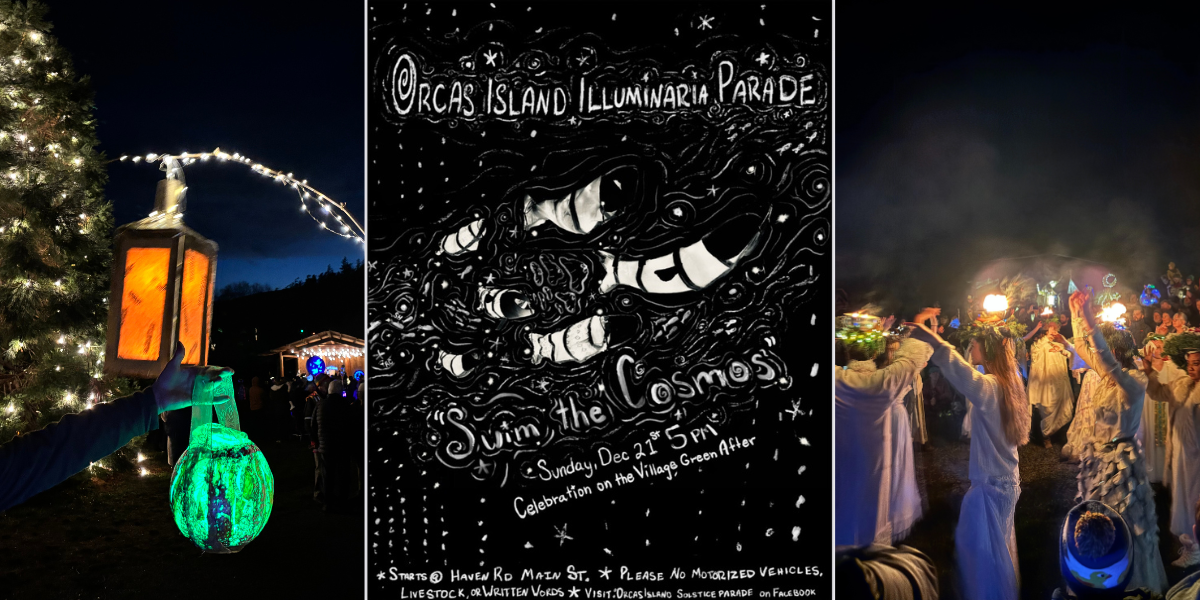from Craig Canine
At the February 7 meeting of the Eastsound Planning Review Committee (EPRC), all seven committee members were present (Yonatan Aldort, Terry Gillespie, Paul Kamin (co-chair), Margaret Payne (co-chair), Leith Templin, Charles Toxey, Brian Wiese).
County Council member Rick Hughes was scheduled to provide a county update during the meeting, but he was in Olympia and couldn’t attend.
The committee discussed various topics of mainly internal interest, including:
- How much detail should the official minutes should include? Should public comments be quoted verbatim and be attributed by first and last name? Paul Kamin suggested that members of the public who want the record to reflect detailed comments should provide those comments in writing; otherwise, comments may be summarized in the minutes.
- Which county planner should be assigned to review permits within the Eastsound Urban Growth Area? Preferably, committee members agreed, a planner who is familiar with the UGA and has actually visited Eastsound! Some county planning staff members are not familiar with the details of regulations in the Eastsound sub-area. EPRC will request that a single knowledgeable planner be assigned to review Eastsound permit applications.
- How can EPRC’s recommendations be communicated to the County Council in a way that Council acknowledges? Often, Charles Toxey pointed out, EPRC’s recommendations seem to disappear into a black hole, with no concrete indication that Council members have received or read them. “We should lean a little harder on Rick [Hughes] to carry our flag and represent us in council meetings,” said Paul Kamin. “He is the assigned council liaison to this advisory committee.”
Two items of more general interest to the public were on the agenda:
- A progress report on the playground planned for the Eastsound Village Green. Paul Kamin presented details on two concepts for the playground, which will be created on the northwest corner of the park (closest to Sea View Theatre). Both concepts have been developed with GreenWorks, a Portland-based firm specializing in sustainable design of public spaces using natural elements, including playgrounds devoted to “nature-based play.” Ben Johnson of GreenWorks was to travel to Eastsound for public presentations of the playground concepts on February 11. Due to weather, the presentations were postponed until Monday, February 25, at 2:30-4:00 and 6:00-7:30 at the fire station. Paul Kamin said he planned to build scale models of both playground concepts to help people visualize what they’d look like.
- A request from OPALCO for EPRC to express its support for deploying electric ferries in the San Juans “as soon as possible.” In its new long-range plan, Washington State Ferries included provisions for building hybrid-electric ferries that would eventually be deployed throughout the WSF system. Under the proposed plan, WSF’s Anacortes-based routes serving the San Juan Islands would be last in line behind all other WSF routes, with electric-ferry deployment not expected until sometime after 2040. OPALCO plans to lobby District 40 political representatives to encourage WSF to put the San Juan Islands higher on its priority list, and asked EPRC to endorse its advocacy efforts.
In discussing the request, some committee members objected. While they expressed personal support for the idea of electrifying our ferries as soon as possible, they questioned whether EPRC would be overstepping its bounds by complying with OPALCO’s request. EPRC, these members pointed out, exists strictly to advise the county council on matters pertaining to the Eastsound sub-area. The ferries fall outside of this purview, they argued.
Other members of the committee disagreed, arguing that the ferry system is integral to the economic vitality of Eastsound, as well as to its residents’ wellbeing. Cleanliness of the island’s environment, including the waters of the Salish Sea, is a matter of paramount concern to Eastsound businesses and residents. Electric ferries will not only emit less fossil-fuel pollutants; they will also be quieter, which is a major factor affecting the survival of southern resident orcas—which, in turn, affects the wellbeing of Eastsound sub-area residents and businesses. “Everything is connected,” said one committee member, in support of this point of view.
After lively discussion, the committee voted to send the following letter to the County Council:
Feb. 8, 2019
To the San Juan County Council:
Whereas, in February 2017, Orcas Island residents created a vision for updating the Eastsound Subarea Plan in which the first sentence describes Eastsound as “a diverse, vibrant community that embraces and emulates the wild and generous nature of Orcas Island and the Salish Sea,” and
Whereas, in April 2017, the EPRC unanimously voted to approve this vision;
Therefore, at its Feb. 7, 2019 meeting, the EPRC voted unanimously to recommend that the San Juan County Council support Washington State Ferry’s 2018 Master Plan, especially the early construction and deployment of sustainable, hybrid electric ferries.
**If you are reading theOrcasonian for free, thank your fellow islanders. If you would like to support theOrcasonian CLICK HERE to set your modestly-priced, voluntary subscription. Otherwise, no worries; we’re happy to share with you.**








Thanks to the EPRC for all their work! OPALCO supports House Bill 1160 and Senate Bill 5214 to fund WSDOT electrification of the ferry fleet and asks that the San Juan Islands ferry routes be moved up to the next appropriations cycle. OPALCO stands ready to help WSDOT Ferries to electrify ferries and terminals on the San Juan Islands routes. Please reach out to our Washington legislative delegates below:
Representative Jake Fey jake.fey@leg.wa.gov
Representative Jeff Morris jeff.morris@leg.wa.gov
Senator Liz Lovelett liz.lovelett@leg.wa.gov
Representative Debra Lekanoff debra.lekanoff@leg.wa.gov
Senator Steve Hobbs steve.hobbs@leg.wa.gov
The San Juan islands need new ferries as soon as possible. Even if WSDOT starts now, the current delivery schedule indicates the islands will not receive a new ferry until the end of 2030.
Here is a link to a slide presentation outlining OPALCO’s Support of Electrifying the San Juan routes first:
https://www.opalco.com/wp-content/uploads/2019/02/eFerry-Inter-Island-Ferry-Project-1.pdf
oops use this link instead:
https://www.opalco.com/ferry-electrification/